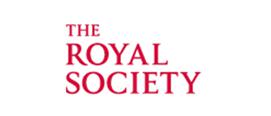Year 3: Plants
This list consists of lesson plans, activities and video clips to support the teaching of plants in Year Three. It contains tips on using the resources, suggestions for further use and background subject knowledge. Possible misconceptions are highlighted so that teachers may plan lessons to facilitate correct conceptual understanding. Designed to support the new curriculum programme of study it aims to cover many of the requirements for knowledge and understanding and working scientifically. The statutory requirements are that children are taught to:
• identify and describe the functions of different parts of flowering plants: roots, stem/trunk, leaves and flowers
• explore the requirements of plants for life and growth (air, light, water, nutrients from soil, and room to grow) and how they vary from plant to plant
• investigate the way in which water is transported within plants
• explore the part that flowers play in the life cycle of flowering plants, including pollination, seed formation and seed dispersal.
Visit the primary science webpage to access all lists.
Do plants need soil to grow?
This resource provides a set of videos and a practical investigation aimed at supporting working scientifically in the classroom and relating science to real world experiences. In the first video Professor Brian Cox joins a teacher to find out how to set up and run an investigation to find out if plants need soil to grow. Children try to germinate and grow plants from a seed using a variety of different materials instead of soil. Further videos show Brian Cox visiting an Industrial farm to find out about how they grow vegetables in a building and meeting a researcher looking at soil health.
Drama: Growing Pains *suitable for home teaching*
Use this humorous play script to look at what plants need to grow. Carbunckle a robot, Princess Creosote an alien and Joseph Soap the gardener, meet in a series of discussions trying to establish why plants die, or grow well. It could be used at the end of the topic with children performing this in small groups. They could then create a poster or booklet to explain what plants need to grow well.
Seeds and Plant Growth Discovery Pack
In Seed detectives children are shown highly magnified images of different seeds taken with an electron microscope. Children could predict what the images are then make drawings of them. Show children the actual seeds and try and match them to their images in small groups.
In Seed dispersal children make predictions about their method of dispersal based on their structure. Model wind dispersal in class by having a group of children in the centre of the room representing a plant containing seeds. Individual seeds could be blown away to different areas within class. This idea could always be used to simulate other methods of dispersal.
Investigating if Plants Grow Better with Fertiliser
When investigating the factors that plants need to grow well, often we look at light, water and air, so why not try looking at the effect of fertilizer? This is an opportunity to introduce the need for nutrients from the soil and their importance in plant growth by looking at the growth of radishes.
Various features of the radishes can be measured depending on the ability of the class. For example different parts of the plants can be weighed. Try using a ‘radogram’ in which the radish roots are lined up side by side, a bit like a pictogram, to see the results of the investigation.
Plants *suitable for home teaching*
The curriculum states that children should be introduced to the relationship between structure and function: the idea that every part has a job to do. Slides 1-7 look at the structure of the parts of a flowering plant and their roles. Carrying out the celery experiment and watching the food colour travel up the stem will help to show children that one function of the stem is in the transport of water and nutrients to other parts of the plant.
Egg Box and Cress Heads *suitable for home teaching*
A cross-curricular idea for maths and science, Investigate the conditions that seeds need to germinate in the 'Cress Heads' activity. Investigate through comparative tests if water, light, warmth is needed for a seed to germinate. Look at how to make each test fair by changing only one variable.
Plants: roots and shoots
This series of lesson plans from Hamilton Trust contain lots of activities including: parts of flowering plants and their functions, investigating the conditions affecting plant growth and finding out how water is transported in plants. Ideas are also provided for learning about the stages of plant life cycles, in particular seed formation, dispersal and germination.
Education pack: Spring - pollination
These resources are designed to be used when visiting a local wildlife area or school grounds. Children locate different flowers and find out how they attract pollinators.
The pollination game is an excellent way for children to understand how pollination occurs and the structure and function of the parts of a flower. Have fun role-playing insects and giant flowers. Bees visit the flower and take a sip of the lovely sugary drink (nectar) held inside it. This helps children see that it is the nectar that bees go to a flower for and not the pollen. Pollen attaches to them, which they then leave on another flower when they go to have another drink of nectar.
Smart Bricks for Smart Plants
A range of activities that allow children to apply and practise enquiry skills linked to plants.
Turf Troubles
A range of activities that allow children to apply and practise enquiry skills linked to plants.
Plant lifecycle card match - age 7 to 11
Invite pupils to learn more about the different stages in a plant’s life cycle with this card matching activity.










